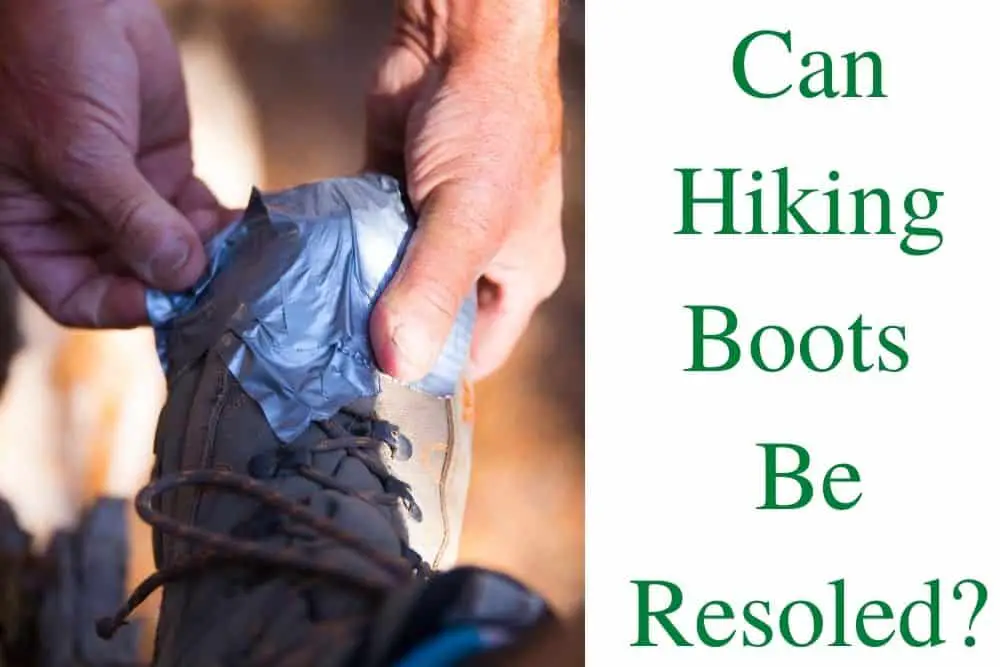Generally, hiking boots can last between about 500 to 900 miles, depending on different factors. But, of course, they will last longer if they are of quality material.
Sometimes, it also depends on how often you use them, purpose, and terrain. Generally, we usually hate to see our lovely shoes look old or less functional, but these things are bound to happen. And this is in the case of hiking boots.
At some points, they will not be as tough as they used to be, not as supportive, and maybe a tear here or there on the boots. And one of the issues with hiking boots is their soles.
With time, they will start wearing off, becoming thinner. Another issue is when the lug wanes, and they don’t do much in gripping the terrain. That makes the hiking boots almost useless because it makes you prone to slipping, falling, and other dangers on the trail.
So if there was a tiny bit of hope that you could still get to wear your hiking boots for long by resoling them, would you be excited? Well, you are about to find out. Can hiking boots be resoled, and how can you do that?
Let’s get started!
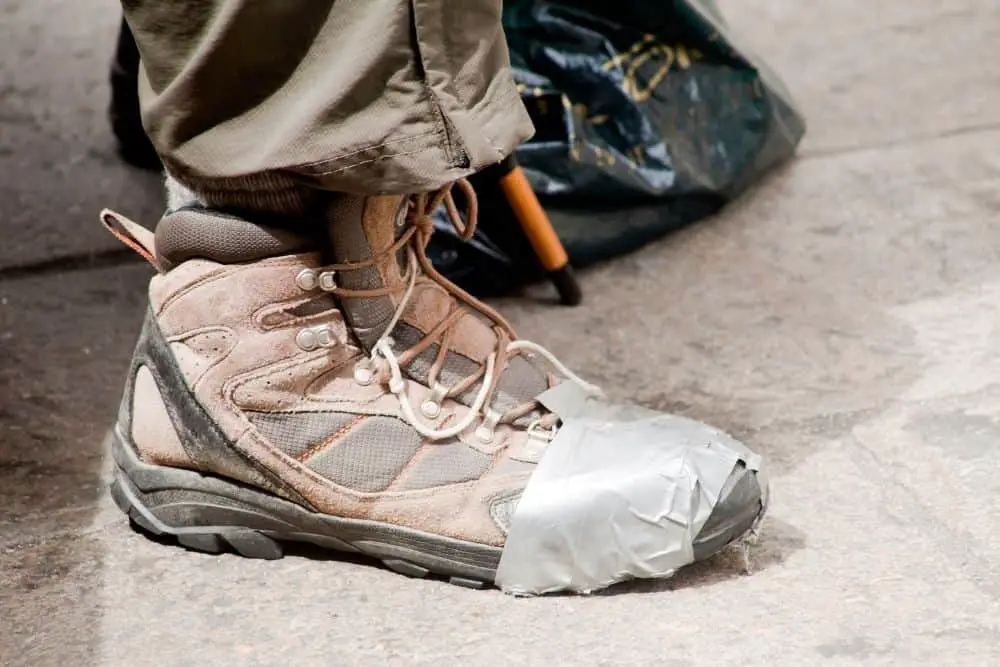
Contents
Can Hiking Boots Be Resoled?
Yes, you can resole hiking boots. So, if you notice your hiking boots’ soles falling apart, you can fix them before they make hiking very uncomfortable for you.
However, you should note that you can’t resole all hiking boots. For instance, you cannot resole most modern hiking boots, so you would have to get new ones as functional as your old ones.
Some manufacturers don’t design their hiking boots to be resoled, meaning that you cannot do much to save them for further use when their soles become faulty. Sometimes, they use high-quality designs when making the boots.
However, you can resole your hiking boots if their design is “double-stitched” or “cemented”. For example, if the manufacturer stitches the sole to the upper, you can re-stitch it back together.
In addition, sprayed on soles can be challenging to remove and replace. Doing that would mean you might ruin the upper in the process, and the point of resoling the boots would be meaningless.
Since we have established that you can resole hiking boots, should you bother with it or not? Resoling your hiking boots has some good and bad sides to them.
So, what are they?
Pros
- Resoling your hiking boots does not cost as much as getting new ones.
- Hiking with new soles is more comfortable than worn out ones.
- It is better to resole when you cannot find an exact replacement for your hiking boots.
- It is ecosystem friendly.
Cons
- The uppers remain the same even after changing the sole.
- Resoling hiking boots will probably not replace the cushioning you need.
- Replacing the soles doesn’t automatically make the other parts of your hiking boots new.
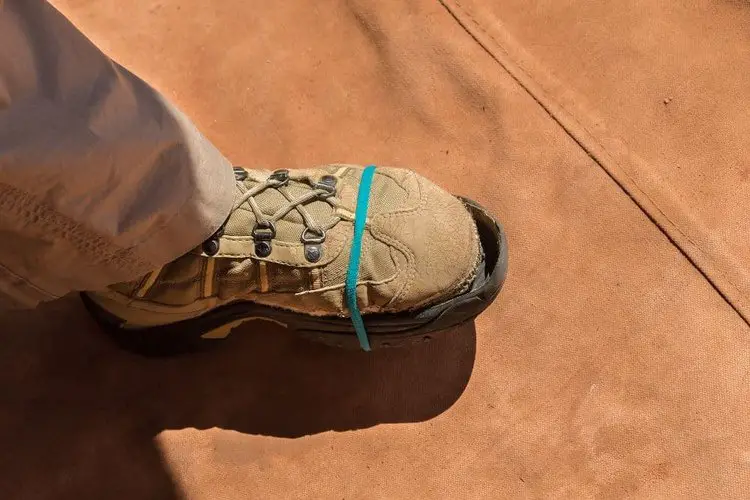
Don’t think about the bad sides of resoling your hiking boots for a minute. If your hiking boots can be resoled, then you should definitely do that, especially if every other part of the hiking boots are still good.
If your hiking boots are almost new, and you have only used them for a few while, removing them isn’t a bad idea. To resole your hiking boots, you need to first examine their state.
What is wrong with them? Are the soles cracked, delaminated, faded, or the stitches are coming off? Then, you need to know how they are joined to the uppers; whether through double stitching, spraying, cementing, or glued.
You also want to know the kind of stitching method it is. However, if you are not familiar with all those, you should ask a professional to examine your hiking boots.
You could check for an online or offline repairer. So, if you really need or want to resole your hiking boots, you probably can.
How To Know When To Resole Your Hiking Boots?
At what point do you know that your hiking boots need resoling? Is it when they come off completely, or there’s a tiny opening?
You will most likely know when you need to resole your hiking boots. The signals are usually visible, and sometimes, you can feel them when you wear your hiking boots, and eventually, you will see them.
So, when is the ideal time to resole your hiking boots? Signs you should watch out for are:
- Faded lugs
With fault soles, the lugs are the number one signal you want to be on the lookout for. This is because the lugs help contribute to solid grips on terrains, and when they are thin or faded, it becomes a problem.
This can make you slip or fall on uneven terrains. This puts you at many risks, including breaking a bone or twisting your ankle. Therefore, you had better be on the lookout before it gets to that point.
If your hiking boots don’t feel as elevated as before, you should look at the lugs beneath them and find out. You can then replace the sole with a newer one with better lugs.
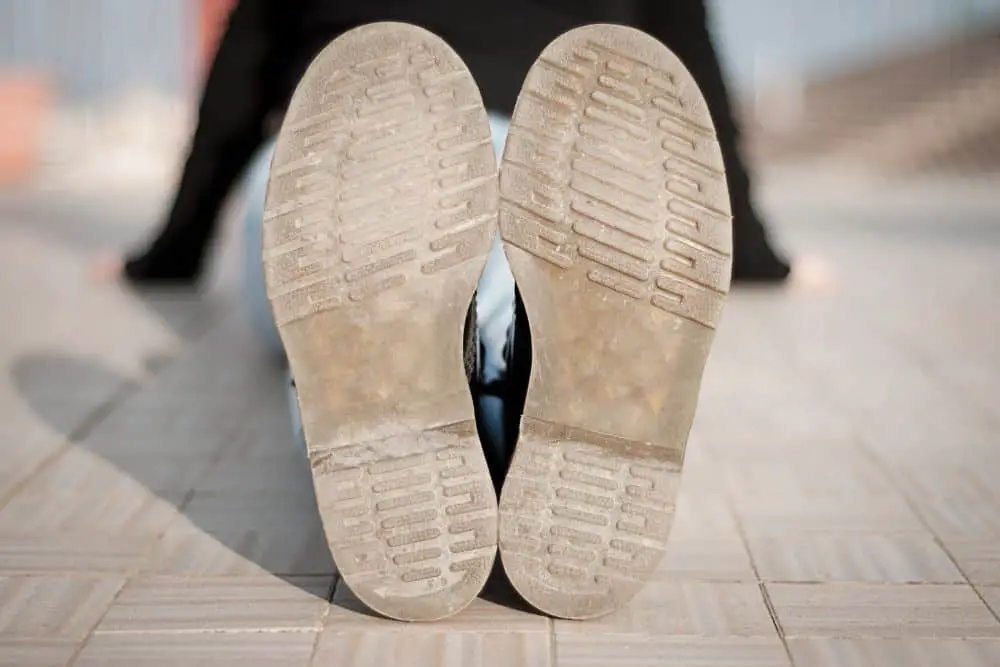
- Uneven soles
Another signal that it is time that you resole your hiking boots is uneven soles. When you wear shoes, including hiking boots, you tend to lean more on one side than the other.
This can also happen when you hike on uneven terrains and lean more on any side. The side you lean on is more likely to wane faster than the other side.
This creates some imbalance when on the trail, and you may not be able to keep up with it in no time. Therefore, you should resole your hiking boots and return the balance when that becomes an issue.
- Peeled soles
When your hiking boots’ soles peel off, it is time you resole them back in place if they are still good enough or you can use new ones. For example, the stitches holding them together may loosen, and that leaves an opening in your hiking boots.
Other times, it could be the glue losing the bond holding the upper and sole together. This could happen on the trail or when you are home.
You may not be able to do much on the trail about your soles coming off, but you can resolve the issue before your next hiking trip. Carrying duct tape with you on the trail can help with a temporary solution. However, you should use a more permanent fix like resoling your hiking boots.
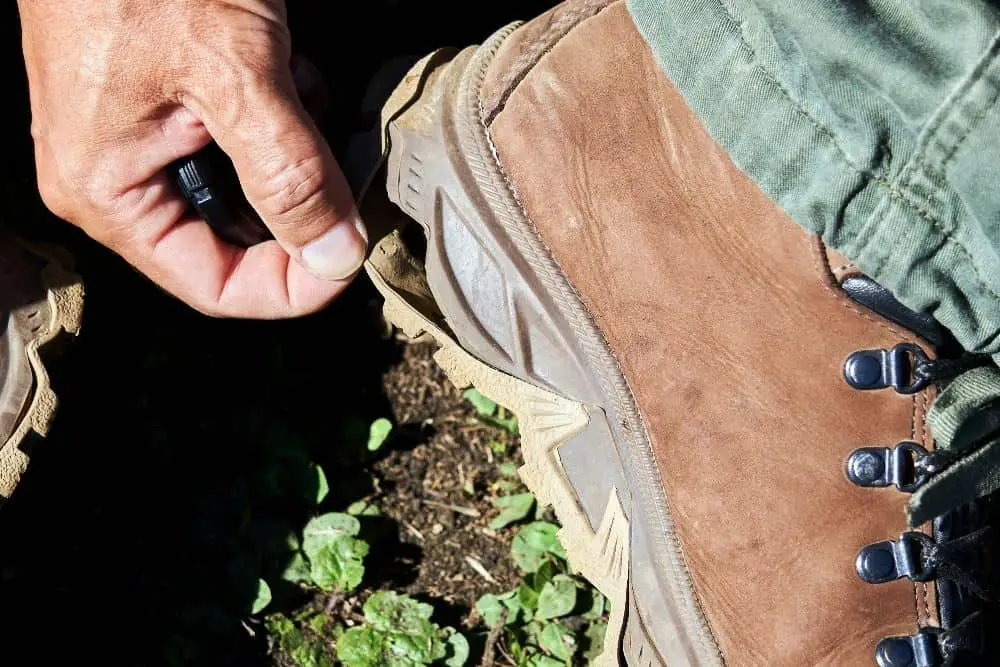
- Dented soles
You also need to resole your hiking boots when dents are in them. Holes in your hiking boots soles are not a good idea and can be problematic.
When you notice these holes or you see stones stuck in your soles, you should replace the soles of your hiking boots’ uppers.
- Thin soles
Thin soles are a sign that you need to resole your hiking boots as soon as you can. They don’t do much good on the trail, including elevation and support, nor are they safe. Therefore when you notice the soles of your hiking boots getting thinner, you should replace the sole.
- Cracked soles
You would also need to resole your hiking boots if there is a crack or tear in the sole. This may make it feel like the hiking boot is splitting into two. This is a sign that you need to replace the cracked soles with newer ones.
Read more:
Things to note when resoling hiking boots
Before resoling your hiking boots, you should note the fault in the soles. Is it a crack, tear, hole, or loose stitches?
In addition, before resoling you should ensure that you don’t use polish or waterproof products that contain mineral oil, animal grease, oil, or beeswax. This will make the material soft or slippery and hinder the sole from sticking to the uppers properly.
Instead of using those, you can use water-based waterproofing gel or spray.
After resoling, you want to ensure the new soles are as good and functional as the old ones. Check if the soles match the uppers with no overlapping or any edge poking out of place.

How To Resole Hiking Boots
There are different ways to resole your hiking boots. The common ways of resoling your boots are:
1. Seek Professional help
You can either do that yourself or ask a professional cobbler for help, but asking a professional for help is better. They know the soles that will fit your hiking boots and they are experts at fixing shoes. You only get to pay some money for service and material fees.
2. Online repair
Another option would be to send your hiking boots to an online repair service. You will find a couple of shoe repair services if you check online. Plus, you could ask your friends, family, and fellow hikers the services they use. One good place to check online is online forums.
3. Ask the manufacturer for repairs
You also have the choice of sending it to the company who made your hiking boots. But first, you should check if you still have a warranty on them, then maybe you can get a discount for repairs.
If not, you can ask them if your hiking boots are eligible for resoling before you decide whichever repair method is more suitable for you.
Read more:
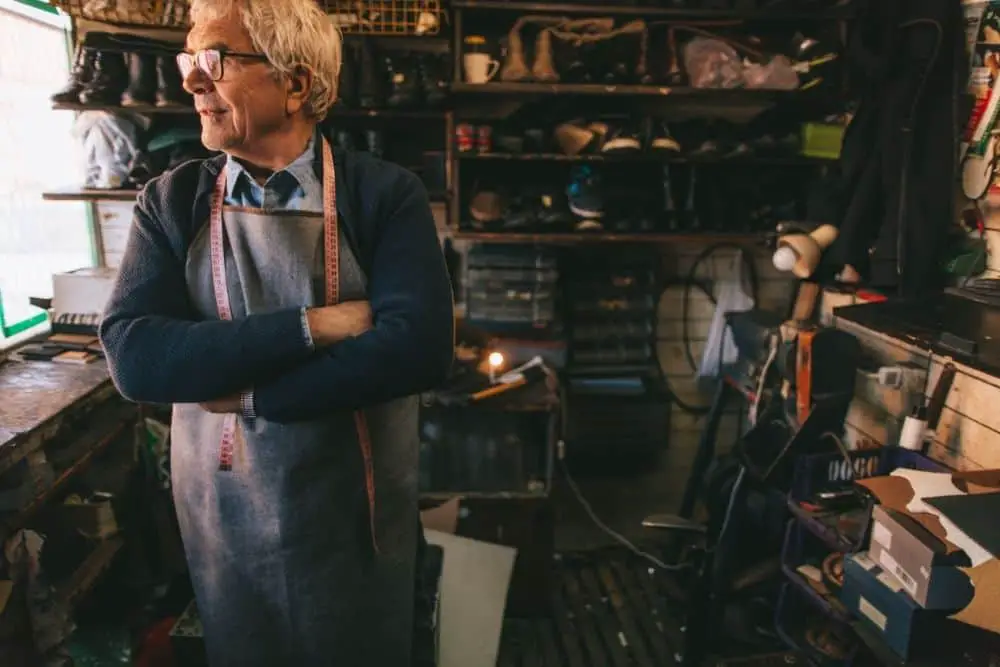
How Often Should You Resole Hiking Boots?
Depending on how often or what terrain you wear your hiking boots, you would need to resole your hiking boots after you have used them between 300 to 500 miles. And considering how often you hike, that could be between two to six months.
Based on where you hike, the “how often” answer will likely differ. Let’s see two major types of hiking terrain causing frequent resoling.
1. On dry terrain
Usually, if you use your hiking boots often on rocky dry terrains, the soles will wear off too often. And you would need to resole after you have used them for about 300 to 500 miles.
Moreover, sometimes, depending on the durability of the hiking boot, you might only need to resole your hiking boots once or, at most, twice a year. So, resoling on dry terrain is dependent on the footwear quality and how many miles you hike.

2. On wet terrain
The truth is; if you wear your hiking boots quite often on rocky, wet, or slippery terrains, you would need to replace the soles earlier than people who don’t.
For instance, if you hike 300 – 500 miles, you will likely have to resole your hiking boots every two to three months. This happens because the water weakens the glue and thread stitching material faster.
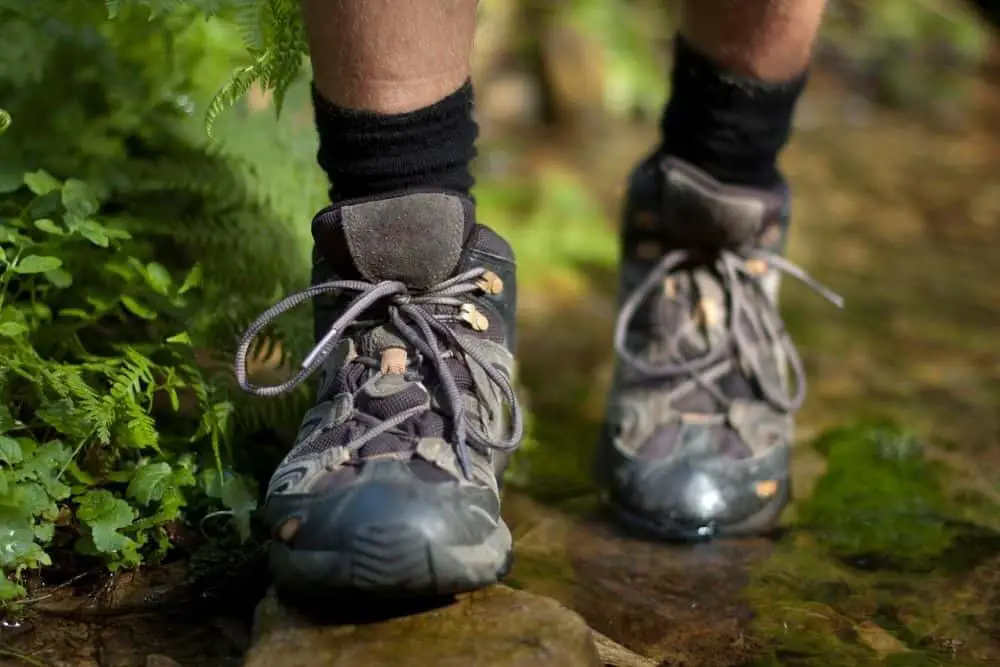
Which Hiking Boots Can Be Resoled?
Like we mentioned earlier, not all hiking boots can be resoled. However, you can resole hiking boots with Stitchdown, Goodyear, Blake stitched, hand, or Blake Rapid Stitched.
If your hiking boots are double-stitched or cemented, it will be easier to separate the soles from the uppers and replace the old soles with new ones.
In addition, you can resole hiking boots that manufacturers have built to last long. The materials are durable, and resoling them will extend their lifespan. If the hiking boots’ material is leather, suede, or synthetic, you can replace their sole since they are durable enough to last for extra mile usage.
However, some kinds of hiking boots construction cannot be resoled, in terms of whether they are lightweight or heavy. For example, midweight or lightweight hiking boots can be problematic to resole because their materials are not as strong as heavyweight ones.
If their soles are bad, there is a possibility that their uppers are close to falling apart as well. So, even after resoling them, you may not get to use them for longer.
You can have a difficult time resoling hiking boots with Strobel shoe making technology because they have non-woven insoles sewn to the upper through Strobel stitch. This helps them to form a solid unit. However, you can glue them back on when the soles go bad.
For hiking boots with sprayed on soles, you can replace the outside heels with new ones. However, due to their designs, you may not be able to completely replace the soles without damaging the uppers. Therefore, you cannot resole them totally.
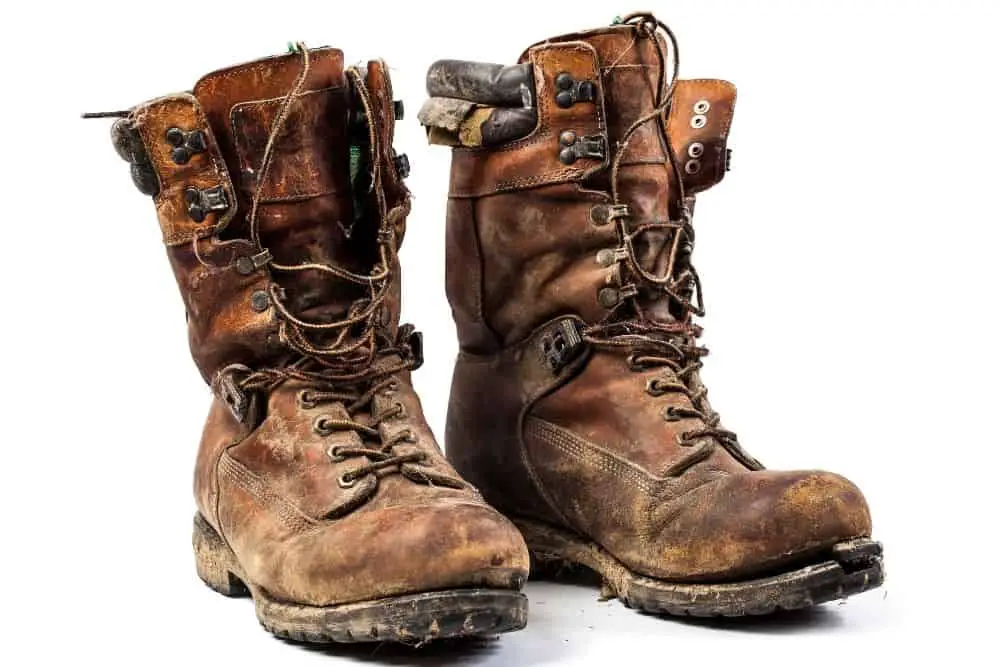
Can Merrell Hiking Shoes Be Resoled?
Yes, you can resole Merrell hiking shoes. Merrell hiking shoes usually have vibram soles, and you can repair vibram soles. Therefore, irrespective of the kind of Merrell hiking shoes you have, you can replace their vibram sole with another ones, when the original ones are bad.
So whether your Merrell shoes have lost their grip on the trail, or they’re separating from the uppers or broken in other ways, you can fix the soles. With the help of a professional or a good DIY guide, you can wear your Merrell shoes for a longer period.
But, of course, it is better that you use a professional service for resoling your Merrell hiking shoes. The most appropriate place to send them to for repairs would be to the manufacturer, however, they don’t do repairs.
But if you send them a message, they could refer you to some trusted professionals for repair. Or you could look for a professional cobbler yourself.
Conclusion
Like everything we use, hiking boots get old with time and constant usage. And one of the parts of hiking boots it tells on is the sole.
When the soles become faulty, you need to fix them so you can use your hiking boots for a longer period. However, when there’s damage to the sole, you can either resole them yourself or ask a professional.
But first, you need to know if your hiking boots can be resoled and if doing that can help your boots in any way. In addition, if you use your hiking boots for heavy-duty purposes, they will be more durable, and resoling them will make sense.

